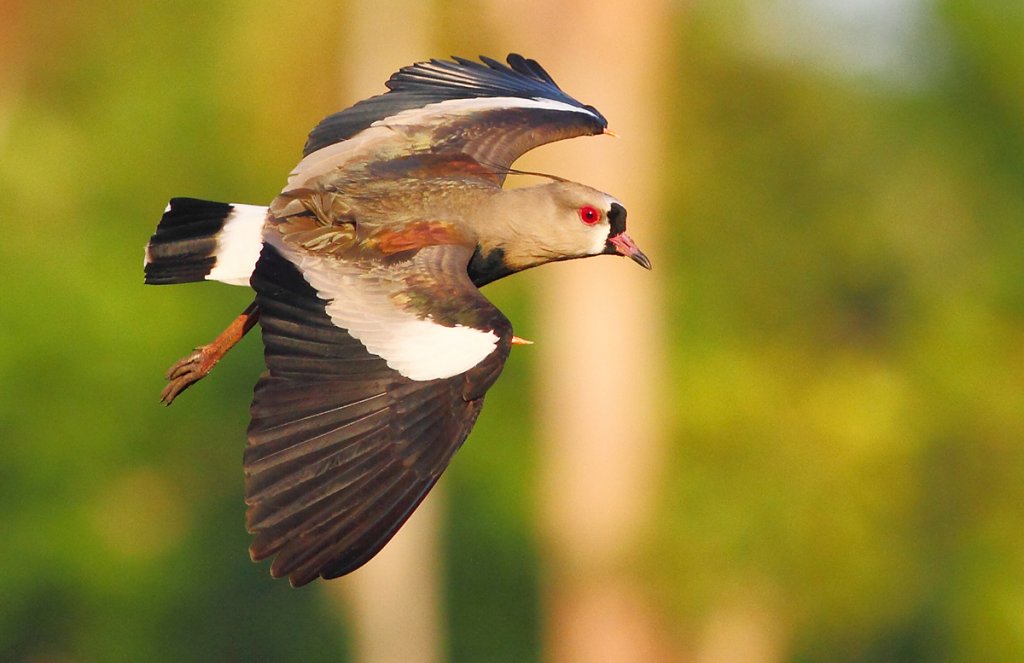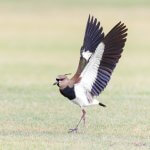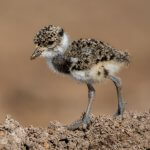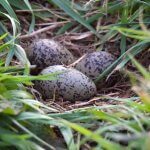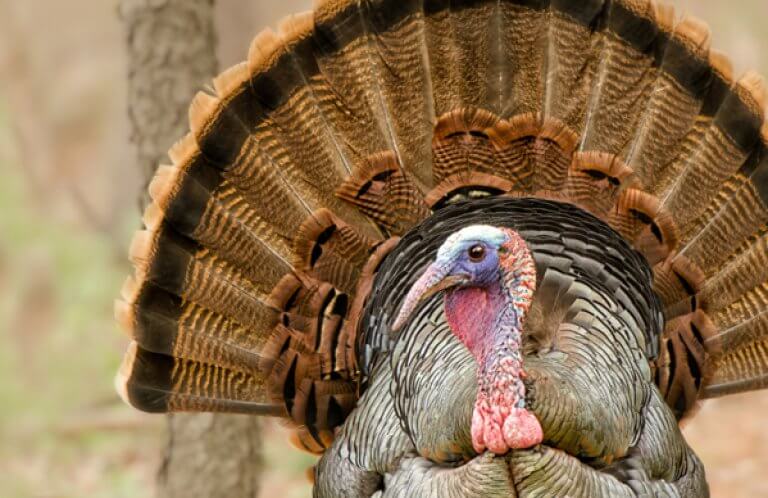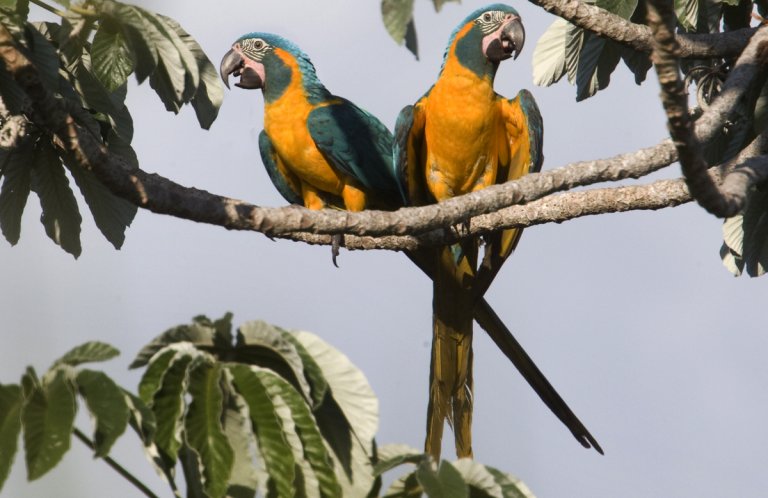About the Southern Lapwing
The Southern Lapwing is a big, noisy shorebird in the plover family, related to the Killdeer and American Golden-Plover. It has an eye-catching color pattern with black breast, white belly, and bronze-shaded shoulders. Its eyes are bright red with a pinkish eye-ring, and its legs and feet range from reddish to black. Its head is topped by a wispy black crest. Short, rounded wings show a bold black-and-white pattern when the bird flies. The sexes are similar, and these birds are often seen in pairs and groups.
This widespread wading bird has many regional names; called quero-quero in Brazil, tero-tero or tero in Argentina, Paraguay, and Uruguay, and queltehue in Chile. It is the national bird of Uruguay.
The Southern Lapwing is highly territorial at all times of the year, readily taking on perceived intruders large as well as small.
Wing Weapons
A Southern Lapwing is equipped with two bony, keratin-covered spurs, one on each carpal (wrist) bone, located on the leading edge of the bird's wings. The Southern Lapwing will flash these spurs at potential rivals during aggressive displays or will use them as weapons during fights or in defense of its territory and young. The leg spurs of the Wild Turkey serve a similar defensive function.
Songs and Sounds
The Southern Lapwing makes a number of noisy calls: a harsh barking “tee-ow” and a loud, harsh “parp-peup-peup-peup,” heard in flight, during defense, or when the bird flushes from the ground. In Chile and Brazil, wing-clipped birds may be kept as sentinels!
Listen to this lapwing's noisy calls here:
Another call:
Breeding and Feeding
The Southern Lapwing breeds cooperatively in small groups, made up of a breeding pair plus one or two of their young from the previous season. After mating, the female lays 3-4 cryptically-colored eggs in a bare ground scrape sparsely lined with grasses. Both sexes take turns incubating the eggs for the next month. The young hatch covered in down with eyes open and are able to leave the nest within a few hours of hatching. The parents continue to feed and defend the chicks until they fledge, about a month after hatching.
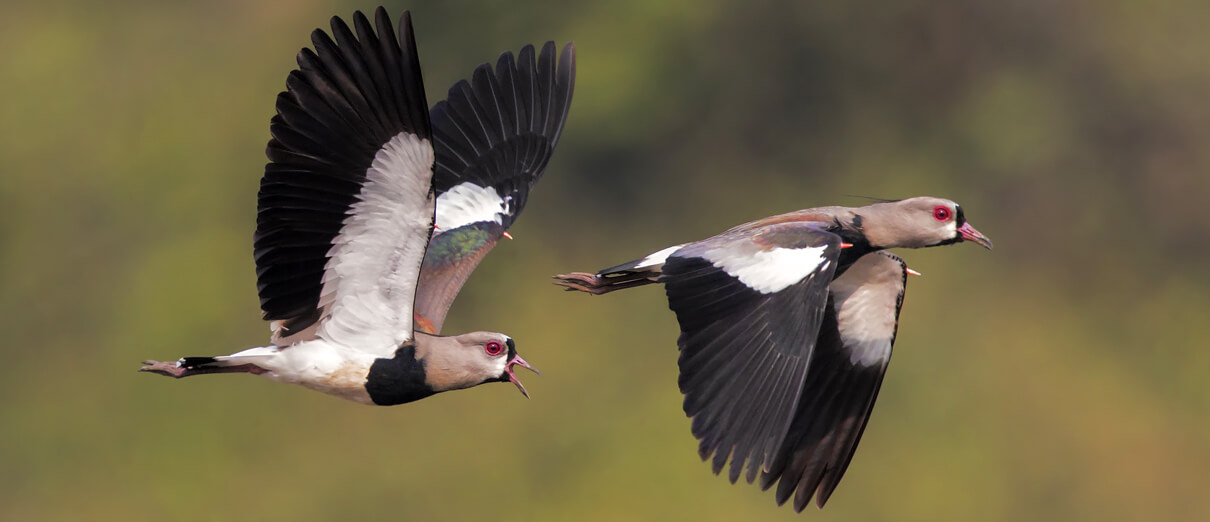
Adult Southern Lapwings aggressively defend their nest and young with threats, noisy vocalizations, and low flights. It will even dive-bomb people who get too close! Groups of lapwings may cooperate to chase an intruder away, a behavior called “mobbing.” Like the Snowy and Wilson's Plovers, adult Southern Lapwings may also employ a broken-wing display to distract predators. This species may breed several times per season.
After the breeding season, Southern Lapwings disperse into wetlands and seasonally-flooded tropical grasslands in larger flocks of up to 200 birds.
Feeding Day and Night
The Southern Lapwing forages on the ground and in the water for insects, earthworms, small fish, and aquatic invertebrates. Along with the Piping Plover and other relatives, it shows “foot-trembling” behavior, dashing along, stopping abruptly, then rapidly patting the ground with one foot. The resulting vibrations are thought to bring worms and other prey to the surface, or startle insects into moving, making them easier to catch.
Like many shorebirds, the lapwings often forage at night, as well as during the day. During the day, Southern Lapwings forage alone or in a small group, but at night, when predation is higher, they forage in larger flocks, with one bird acting as a lookout.
Region and Range

A widespread resident of open grasslands and wetlands, the Southern Lapwing can be found throughout South America except for deep forest or the highest mountains. Fossils from the Pleistocene suggest that the Southern Lapwing once occurred as far north as Florida, so its recent range expansion northwards to Central America, southern Mexico, and the southern Caribbean may suggest a return to some of its former range.
This plover is non-migratory, although the southernmost populations may move to warmer areas during the winter.
Conservation

Help support ABC's conservation mission!
The Southern Lapwing adapts well to human-altered habitats, and appears to be increasing its range in response to land clearing for agriculture and settlement. Since it prefers very short grass, the Southern Lapwing can also be spotted in golf courses, airports, and parks. It's often the first bird species people see when arriving at an airport in the neotropics.
This southern shorebird may be spotted at 21 ABC-supported reserves throughout the Americas, including Bolivia's Barba Azul, which shelters the Critically Endangered Blue-throated Macaw and is an important stopover site for migrating Buff-breasted Sandpipers.
Get Involved
Many of the rarest bird species in the Western Hemisphere remain relatively unknown. You can learn more about these birds and the threats they face by signing up for ABC's Bird of the Week email series, which frequently highlights these fascinating birds.
American Bird Conservancy and our partners throughout Latin America and the Caribbean have created and expanded more than 100 bird reserves, which protect upward of 1.1 million acres of vital habitat. Together, we've planted more than 6.8 million trees, helping to restore degraded and damaged habitat. You can help us continue to protect endangered birds by making a gift today.





































